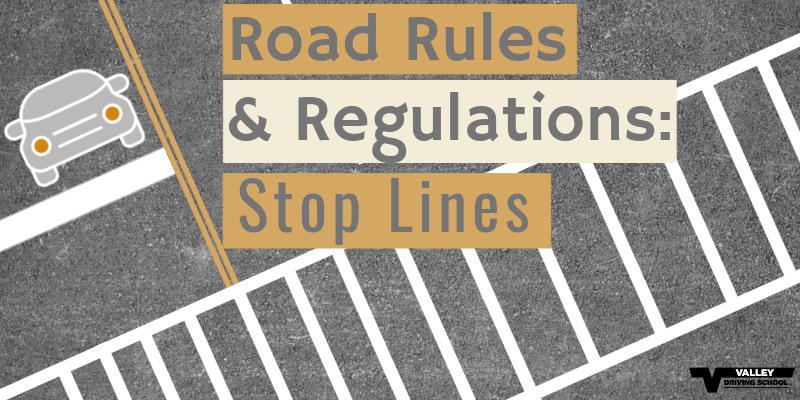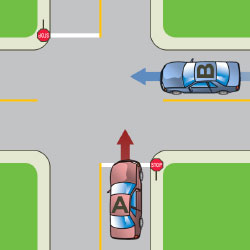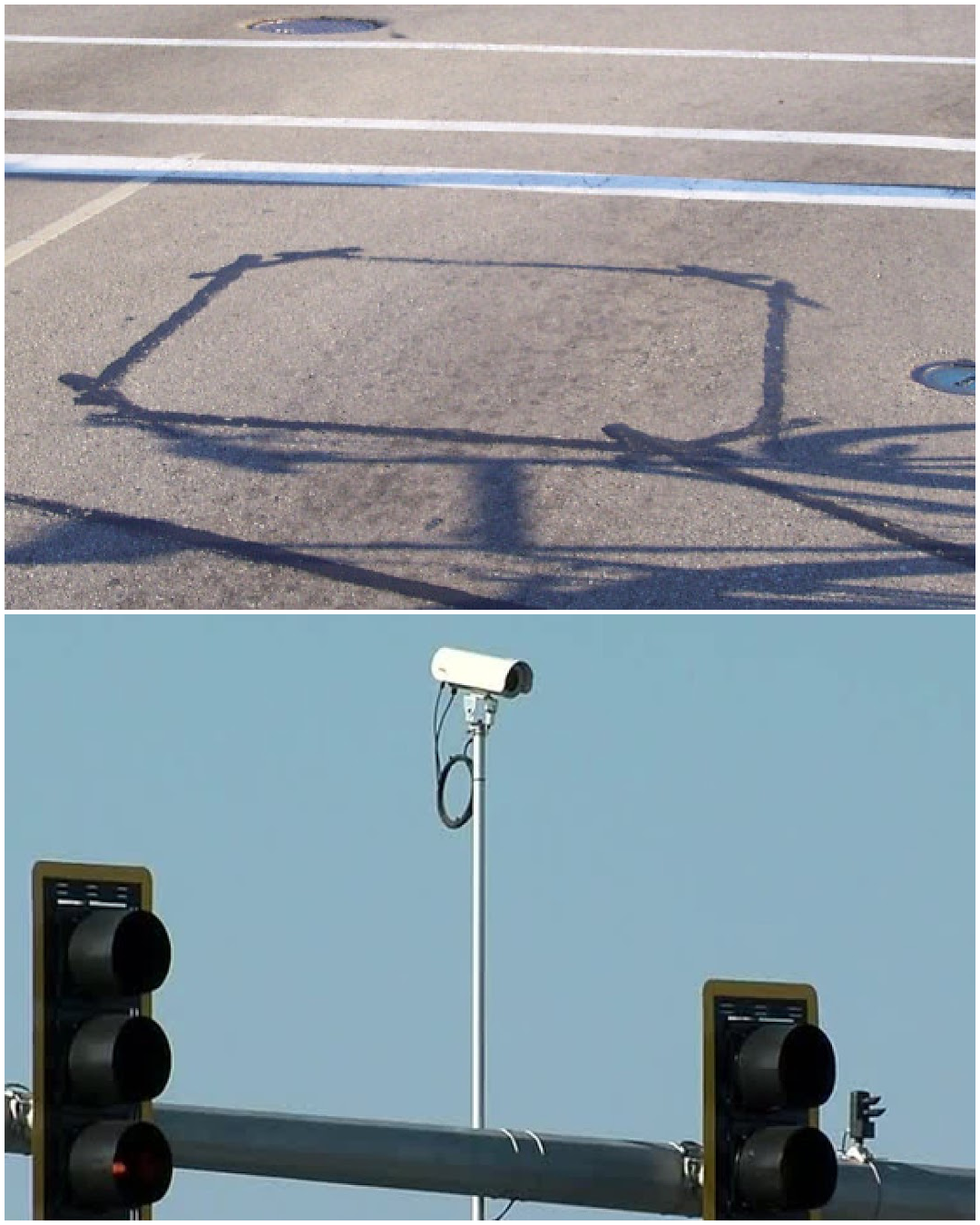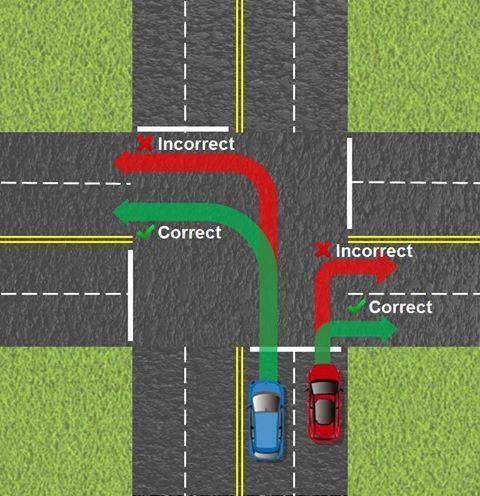Stop signs and red lights are easily recognized, but what about different kinds of stop lines? Stop lines are horizontal (transverse) white lines painted across lanes and are used to indicate where a vehicle must stop in compliance with a traffic signal, stop sign, or other specific requirements.

This week we’re talking about how drivers should be using stop lines in a variety of environments and scenarios.
Stop Lines
 A stop line is a thick white line that runs perpendicular to standard road lines, and tells drivers that they must stop before the line. While it may be tempting to roll past the stop line to give yourself a better view of the changing light or the oncoming traffic, you’re putting those who use the space in front of the stop line and even yourself in danger. The main purpose of a stop line is to indicate the point where a vehicle must stop to ensure it is safe to proceed prior to moving through a crosswalk area and entering an intersection.
A stop line is a thick white line that runs perpendicular to standard road lines, and tells drivers that they must stop before the line. While it may be tempting to roll past the stop line to give yourself a better view of the changing light or the oncoming traffic, you’re putting those who use the space in front of the stop line and even yourself in danger. The main purpose of a stop line is to indicate the point where a vehicle must stop to ensure it is safe to proceed prior to moving through a crosswalk area and entering an intersection.
Signalized Intersections with cross walks will have a separate, thicker white line one meter before the crosswalk to allow adequate space to keep pedestrians safe. Intersections without a marked crosswalk will have a wide white line to indicate a stop line.
Benefits to Drivers

How does stopping prior to stop lines benefit you, as a driver? Many intersections have inductive loop traffic detectors. You can think of these loops as an oversized metal detector - they detect the metal in your vehicle, mostly in the front axle, and they are installed in the pavement prior to the stop line. When your vehicle is stopped over them, the inductive loop sends a signal to the traffic control device of your vehicles’ presence. SUV’s sometimes have difficulty being detected, as the vehicle body is higher off the ground than other vehicles. Motorcycles can also have difficulties being detected, due to the lack of iron in them, and it’s suggested that riders position themselves to the left or ride side of the inductive loop to have the highest chance of being detected.
Some intersections also have overhead cameras installed, which have vehicle detection zones. Once the programmed fields detect the presence of vehicles, the traffic control signal will be activated to manage traffic effectively. This video detection not only allows the traffic control signal to keep the traffic flowing, but it also provides an indication of changes that may need to be made at intersections to adjust for increases or decreases in traffic.
Turning Lanes
 You’ll notice that in left turning lanes, there is a separate stop line that may be set further back from the adjacent lane stop lines. You must ensure that you don’t creep past the horizontal white stop line, as these sections are used to give larger vehicles in the perpendicular traffic lanes the necessary space they need to complete left turns.
You’ll notice that in left turning lanes, there is a separate stop line that may be set further back from the adjacent lane stop lines. You must ensure that you don’t creep past the horizontal white stop line, as these sections are used to give larger vehicles in the perpendicular traffic lanes the necessary space they need to complete left turns.
When turning right at a red light or stop sign, be sure to come to a complete stop before the stop line. Check left, centre, and right, for pedestrians and oncoming traffic and follow this with a right shoulder check. Once determined that it is safe to do so, pull forward to get a clear view of oncoming traffic and the area you will be moving into. You can then proceed when it is clear to do so, and a second stop is not required unless necessary for safety.
You should also be aware of right turns that don’t allow you to proceed on a red light. If this is the case, it will be indicated with a visual sign and you must remain behind the stop line until the light is green and it is safe to proceed.
No Stop Lines?
What do you do when you come across an intersection without stop lines? Just because there is no visual indicator painted on the road doesn’t mean the rules don’t apply. If there is no stop line but there is a marked crosswalk, you must stop your vehicle before the marked crosswalk. If there is no stop line and no marked crosswalk, you must stop prior to entering the intersection.
--
Staying alert and paying attention to the markers on the road will not only make you a safer driver but will keep your fellow road users safe. Just as you would respect a proper stopping distance behind the vehicle in front of you, you should do the same when approaching stop lines. Together, we can all get to our destinations safely.
